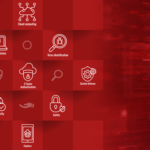
What is Vulnerability Analysis, and How Does It Work?
Did you know that 60% of all data breaches were made possible by unpatched vulnerabilities (Willis, V. 2019)? That staggering figure shows why a vulnerability assessment is critical to any cybersecurity strategy.
There is no denying that every system has vulnerabilities. Detecting them quickly is key to properly identifying, prioritizing, and mitigating them. However, as organizational architecture grows more complex, it’s difficult to fully understand it without utilizing a systematic vulnerability analysis.
Read on to learn why vulnerability analysis is important and how it can be utilized to help your organization overcome its cybersecurity risks.
What Is Vulnerability Assessment?
The purpose of vulnerability analysis, or vulnerability assessment, is to create a structured process for discovering vulnerabilities in a system, prioritizing them, and creating a mitigation strategy. Cybersecurity professionals often use vulnerability analysis alongside other detection methods, such as penetration testing, to better understand an organization’s system and its most significant risks.
Since there are multiple uses of vulnerability analysis, there are many different types of assessments to choose from (Computer Security Resource Center, 2022):
- Application assessments to determine vulnerabilities within the web applications your organization uses.
- Network assessments that require a review of your procedures and policies to protect you against unauthorized access.
- Database assessments to discover configuration issues, unprotected data, and other vulnerabilities within your infrastructure.
- Host assessments to reveal vulnerabilities of your critical servers that could impact operations and security if not properly tested and protected.
Most organizations need to run a combination of these assessments regularly. As with most cybersecurity practices, you need to invest time into vulnerability assessments on a routine basis and adjust practices and policies accordingly as an organization’s architecture and cyberthreats evolve.
Vulnerability Assessment Checklist
Even if you’ve conducted vulnerability assessments in the past, staying up to date on the best practices of vulnerability assessment methodology helps you get the most out of the process. As such, here’s a checklist to follow that ensures an assessment is thorough, efficient, and productive (New York State Department of Health, 2022):
- Define desirable business outcomes in advance: Some organizations make certain processes, such as pen tests and vulnerability assessments, mandatory and routine. That is okay, but desirable outcomes need to be defined before every assessment, or it may not be as productive or impactful as a team hopes. Prioritizing risks, achieving compliance, preventing data breaches, or reducing recovery time are all reasonable goals.
- Prioritize before you assess: While a vulnerability assessment can help you prioritize risks, you must also prioritize your assets before moving forward. Conducting a thorough assessment can be an exhaustive process, especially for the first time, so you must first assess the most important components. This also means understanding the different types of assessments you can conduct and how to best structure them before you dive in.
- Prepare for your assessment: Rarely is a vulnerability assessment run with the click of a button. Technical preparation involves conducting meetings, constructing a threat model, interviewing your system developers, and verifying the details of your test environment. Both passive and active vulnerability testing is valuable but knowing when and where to use each VA testing method is essential for success. In addition to knowing your testing options, you need to understand the environment you’re working in and the biggest risks you must prioritize, explore, and mitigate.
- Review as you go: During the test, you must manually check your results to filter out false positives and prioritize true positives. It would help if you also recorded the steps taken and collected evidence to ensure that the process for getting a given result is fully understood and repeatable, as you’ll need to explore it more closely later.
- Create detailed reports after each assessment: A vulnerability assessment is only as valuable as the knowledge it provides, so creating a comprehensive account alongside each assessment is critical to ensuring information is remembered, shared, and used to take action. A complete description of all vulnerabilities, associated risk levels, mitigation steps, and remedies should be compiled.
- Invest in continued education and training: Aside from continuing your education through certification programs, retaining the results and reports of each vulnerability assessment you conduct proves valuable for teaching yourself and others how to better prevent and respond to incidents that may occur in the future. Detailed reports are also helpful in communicating issues to non-technical stakeholders, such as those in the C-suite who need to be aware of significant risks and strategies for dealing with them.
If you stick to these best practices the next time you plan a vulnerability assessment, you’re sure to get a lot more out of the process. Of course, getting to the point where you’re confident enough to conduct a vulnerability assessment takes knowledge and hands-on practice, which is why pursuing further education can help prepare you.
Vulnerability Analysis Tools
Conducting a vulnerability analysis is rarely fully automated, but it’s not completely manual. In most cases, while there will be some hands-on input from a security professional, you’ll also be leveraging various tools to discover vulnerabilities and learn more about them (University of North Dakota, 2022).
Some of the most common vulnerability analysis tools include:
- OpenVAS for All Systems: OpenVAS is one of the most far-reaching scanning tools as it covers not only web apps and web servers but also your network, operating systems, virtual machines, and databases. When vulnerabilities are discovered, the risk assessments and recommendations will help you decide what to do next.
- SolarWinds for Network Errors: SolarWinds offers a network configuration manager that allows vulnerability testing in areas many other tools don’t cover. By revealing misconfigured equipment on your network, SolarWinds can help you discover missing information about your system and the risks it is exposed to.
- Intruder for Cloud Storage: While Intruder is not free, it is a powerful tool for scanning cloud-based storage systems, and the best part is that it monitors constantly and scans automatically, ensuring vulnerabilities are detected as quickly as possible. It also offers recommendations and quality reports to guide your strategy.
- Nikto2 for Web Apps: If you’re looking for an open-source tool to help you scan web applications, Nikto2 is capable software that can alert you to web server vulnerabilities. The downside is that it does not offer any risk assessment features or recommendations, so you’ll have to decide what to do with the vulnerabilities that are found.
- Nexpose for New Vulnerabilities: Nexpose is another open-source tool that’s completely free to use to scan your web apps, devices, and networks. Plus, since it’s updated with the newest vulnerabilities every day via its active community, you can trust Nexpose to provide a reliable scanning solution. The tool also categorizes vulnerabilities based on risk, allowing you to focus on the most pressing issues.
In your work as a cybersecurity professional, you’ll likely come across all of these tools already being used by an organization or your colleagues. Of course, the list doesn’t stop here—there are dozens of other tools in the market like those listed above and finding the right one for your use case means spending some time familiarizing yourself with them.
Become a Vulnerability Analysis Expert
Whether you’ve conducted vulnerability assessments in the past, architecture, threats, and mitigation strategies evolve every day. That’s why investing in your continued education is essential to ensure you hold the most up-to-date and actionable knowledge.
You can confidently proceed with your next vulnerability assessment by pursuing a training program such as the Certified Ethical Hacker (C|EH) course from EC-Council. Interested in exploring the curriculum? Learn more about the program.
References
Willis, V. (2019, June 18). Bad cyber hygiene: 60 percent of breaches tied to unpatched vulnerabilities. Automox. https://www.automox.com/blog/bad-cyber-hygiene-breaches-tied-to-unpatched-vulnerabilities
NIST (2022). Computer security resource center glossary: vulnerability assessment. https://csrc.nist.gov/glossary/term/vulnerability_assessment
New York State Department of Health. (2022). Cybersecurity vulnerability assessment. https://www.health.ny.gov/environmental/emergency/water/drinking/docs/cybersecurity_checklist.pdf
University of North Dakota. (2020, September 29). What is vulnerability analysis? exploring an important cyber security concept. https://onlinedegrees.und.edu/blog/vulnerability-in-analysis/
About the Author
Sydney Chamberlain is a content writer specializing in informational, research-driven projects.
Share this Article
You may also like

The All-New C|EHv12 with New Learning Framework

How Does Vulnerability Analysis Work?

How Does Ethical Hacking Work?
Recent Articles


The All-New C|EHv12 with New Learning Framework

How Does Cybersecurity Management Work?




